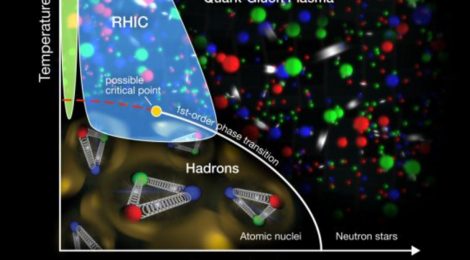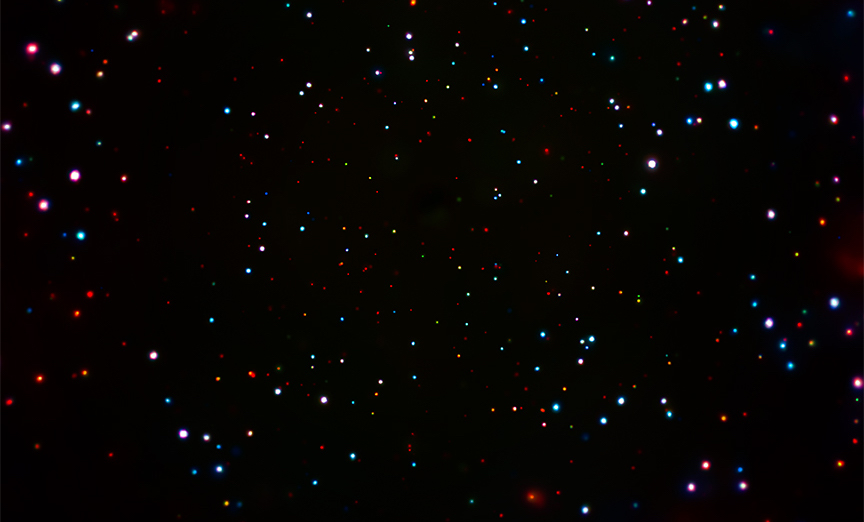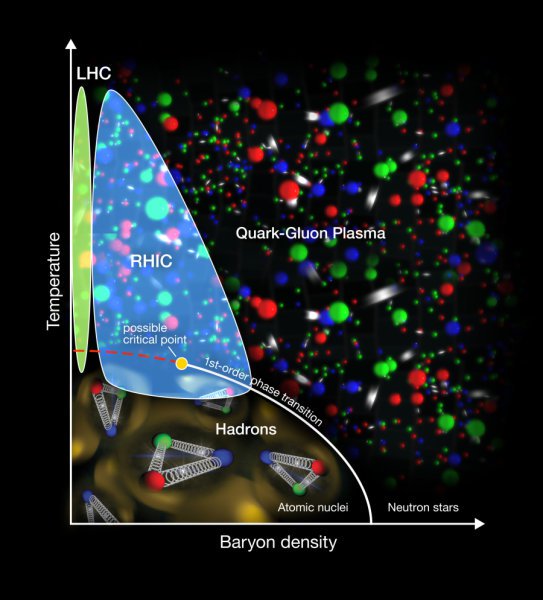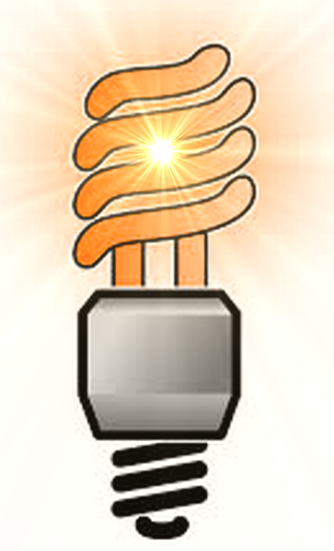
Quark Gazpacho Is Truly Delicious
It seems there is more than one way to make quark soup.
While some like it hot the cold ‘quark gazpacho’ variety is perhaps more compelling.
The study of nature and ecology of atoms is as satisfying as the study of life and it turns out the two are very much the same.
It seems the largest things in the universe, black holes, are effectively the same as the smallest, quarks.
I was amusing myself with a ramble down a particular rabbit hole of thought that came about in wondering about ‘black holes’ and how they are made up of hot quark soup. I’ve always loved gazpacho so why not quark gazpacho. A new paper has just come out that got me going. It shows the most detailed look ever into the depths of our universe which it seems is filled with black holes. Indeed while there may be 1000 times more stars that is a remarkably small multiplier over the number of black holes.

Redshifted Super-massive Black Holes in numbering in the thousands have been logged in this Chandra x-ray image of deep space. These black holes contain millions to billions of solar masses. Take the red pill, click, and head down the Chandra ‘black hole’ site and story. Take the blue pill and read more below.
This incredible black hole survey is providing insights about how supermassive black holes grow—mostly in spurts, it seems, from “mere seeds” weighing just 10,000 to 100,000 solar masses. But many mysteries about black holes remain for example just how the supermassive variety, oft found at the centers of galaxies, are able to consume enough matter to rapidly achieve masses billions of times that of our Sun. And what the heck happens to all the matter that accretes into a black hole where the forces are so great that all of the usual forces that manage atoms are no longer of any import. Black holes are surely large bowls of quark soup but are they seething hot, but tiny black matter might just be more like cold gazpacho. Understanding super-massive portions of quark soup best starts with studying the smallest drop.
Is there more than one recipe to make Quark Soup?
The trip down the ‘black rabbit hole’ led me another paper that comes thanks to a new development in nuclear physics theory. Scientists exploring expanding fireballs that mimic the early universe have new signs to look for as they map out the transition from primordial plasma to matter as we know it. The theoretical work identifies key patterns that would be proof of the existence of a so-called “critical point” where it is possible to have the transition between phases of nuclear matter.

Quark Soup to Matter Boundary Conditions. Wow look at where that line leads. – Brookhaven Labs – click to enlarge
A new recipe in nuclear physics theory where scientists cook up expanding fireballs in particle colliders that mimic the early universe gives them new signs to look for as they map out the transition from primordial plasma, aka quark soup, to matter as we know it. The theoretical work, described in a paper recently published as an Editor’s Suggestion in Physical Review Letters (PRL).
It identifies key patterns that offer proof of the existence of a so-called “critical point” (but it’s not a point at all but a boundary line) in the transition among different phases of nuclear matter. Like the freezing and boiling points that delineate various phases of the matter we call water — liquid, solid ice, and steam — the universal points/line the physicists seek to identify will help them understand fundamental properties of the fabric/matter in our universe.
“We want to understand the properties of QGP (quark soup),” said nuclear theorist Raju Venugopalan, one of the authors on the new paper. “We don’t know how those properties might be used, but 100 years ago, we didn’t know how we’d use the collective properties of electrons, which now form the basis of almost all of our technologies. Back then, electrons were just as exotic as the quarks and gluons are now.”
I hope you are reading this Raju
While the typical ‘scientist’ of this field is one who works in HOT physics, the world of super colliders like those at CERN and Brookhaven, they are not all. Some few of us work on the COLD side of physics and as you are here on my blog you will already know that this is the world of COLD FUSION and related natural phenomenon. While HOT is all about high temperatures that can only be achieved in massive multi-billion dollar machines, COLD being either low temperatures or constrained motion is found in solid state materials. Both low temperature and constrained motion, aka cold, lead to all important coherent behaviour, including superconductivity, which is the behaviour that sends one down the rabbit hole from our commonly perceived particle world into the quantum universe(s).

My work presently is directed to putting my ‘Ready Kilowatt’ heater on the market. The dusty plasma device employs cold fusion which is much like exotic deep space phenomenon.
My focus is all about what goes on inside of the native environment of atoms, that’s predominantly a nano-domain world. Atoms in our common view are ordered packets of matter which interact with other atoms via their electron clouds. They are separated by ’empty space’, or is it empty? It’s working within that ’empty’ space, packing in more and more tiny bits of matter until there is no room to move, where things get really cool and produce remarkable effects such as prodigious heat and helium.
Martin Fleischman was the grand master in this nano world and often spoke of how by his measurement packing of hydrogen atoms into lattice spaces compressed that hydrogen to densities far greater than what is found in the cores of stars. Given that within metals like palladium the lone electrons of hydrogen would be off gallivanting about with the big proton rich and attractive nuclei that ultradense hydrogen/deuterium was very possibly behaving in a transgender quark soup state.
Quark soup ‘life is like a box of chocolates you never know what you are going to get’ when you take something out… Well as ‘cold fusion’ has shown us this isn’t quite true very often one gets 4He and 3He, a few other isotope species are also on the growing soup index. And most interestingly sometimes clearly the ‘wrapper’ of the ‘chocolates’ becomes part of the soup as evidenced by the startling isotopic flavours that emerge.
While I have nothing against the physicists who cook hot soups there is something very special about cold soup, delicious exciting Gazpacho, and it seems Mother Nature likes Gazpacho and makes it spicy and filled with delights.
A brief historical diversion
There has always been a consensus amongst my cold fusion cabal that the very existence of ‘cold fusion’ demands the reactions take place not in the ‘common’ ecology of atoms, that mundane particle metaphor that is atom-ecology for dummies. In the first days of cold fusions emergence on the stage of science such luminaries as Julian Schwinger, Edward Teller, Linus Pauling, Arthur Schalow, and Richard Taylor all the top Nobel laureates of physics uniformly agreed (mostly behind the scenes) that cold fusion had to be evidence of a parallel coherent quantum world of atoms. I had the good fortune to know most of these guys and was the recipient of remarkable personal tutorials, aka chats, on this out of the box world of cold fusion.
But it’s been coming up on 30 years since the late great Martin Fleischmann and his understudy Stan Pons made their monumental 1989 announcement. The fervent religious outrage by the mundanes and dogmatists of physics has been relentless, fomented by the fact that a new atom-ecology would disrupt countless careers and funded paths in their alternate universe. Ces’t la vie.
But as the late great Max Planck said, “science proceeds one funeral at a time”, and alas there have been too many funerals amongst my cold fusion friends. But all is slowly becoming clear, the funerals were not for naught.
Many years ago when my own Palo Alto garage experiments in atom ecology, aka cold fusion, were producing some exciting results I went to my friend Dick Taylor at Stanford. I was seeking some means to accommodate and explain the observed impossible production of selected isotopes.
When I told him I wanted his opinion on these cold fusion results Dick who was always good for a quip said, “I’ll tell you what I think Russ, its all bullshit… but that’s a religious conviction of course… now show me that data.”
Out of his consummate experience, and he won the Nobel Prize for that experience in defining the Quark, he said what I had best pointed toward a bag model for the atom… the atom is not make unp of nucleons but rather is a bag of cold quark soup. Conventional physics explanations could not explain the observations I had made otherwise.
Back to the present
In the work of the STAR group to find ‘critical points’ where matter and ‘quark soup’ are interchangeable progress is being made. According to the groups thinking certain characteristics of the patterns that occur during phase changes are universal — no matter whether you are studying solid matter, water, or quarks and gluons, or magnets. But one key advance of their new theory work was using a different set of universal characteristics to account for the dynamic conditions of the expanding quark-gluon plasma.
“All the predictions, the way we started looking for a critical point so far, were based on patterns calculated assuming you have a pot boiling on a stove — a somewhat static system,” said Mukherjee. “But QGP is expanding and changing over time. It’s more like water boiling as it flows rapidly through a pipe.” Editors note: Aka more like quantum coherent states
To account for the evolving conditions of the QGP in their calculations, the theorists incorporated “dynamic universalities” that were first developed to describe similar pattern formation in the cosmological expansion of the universe itself.
These ideas have since been applied to other systems like the coherent state of liquid helium and liquid crystals. They realized that the specific mechanisms of dynamic universality identified in cosmology and condensed matter systems can be applied to the search for the critical point in heavy ion collisions. This paper is the first explicit demonstration of this conjecture.
Specifically, the paper predicts exactly what patterns to look for in the data — patterns in how the properties of particles emitted from the collisions are correlated — as the energy of the collisions changes. The assumption is that critical points will be found where normal and quark matter are freely interchangeable. That’s precisely what the cold fusion Noble laureates said would be the enabling factor. That it can take place in a constrained/cold solid state microcosm as well as a seething hot plasma is how solid matter came to be in the first place.
Yum, cold quark gazpacho.
This also reminds me of Dr. Leif Holmlid’s work, were he has apparently found one of the critical points along the boundary layer. Would you agree?